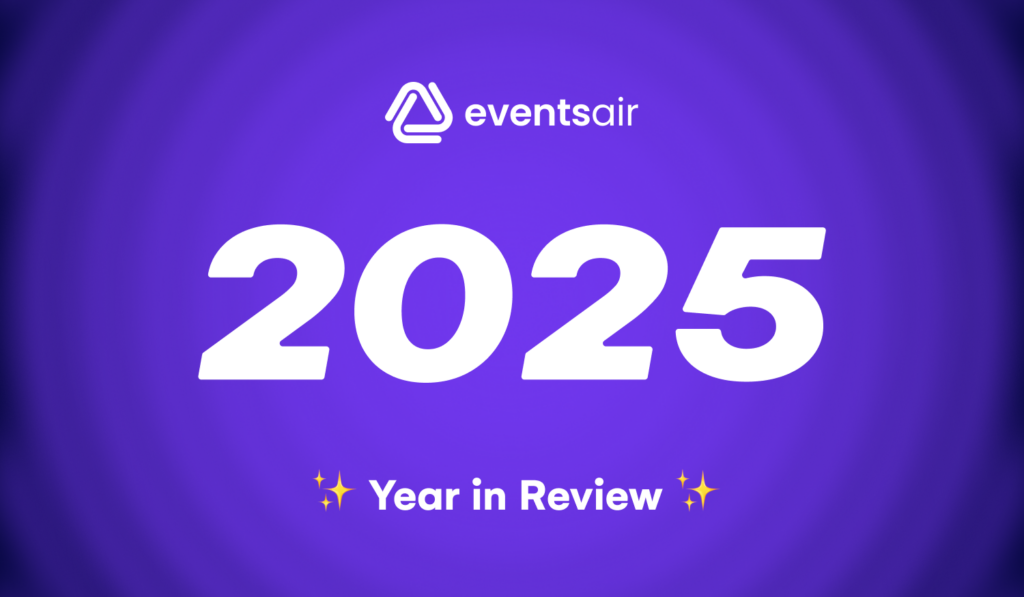
Technology moves at a rapid pace. Since the very start of the PC revolution back in the early 1990s, meeting planners have been making good use of computers, databases, and later, the Internet to help make their jobs more efficient and productive.
The very first event registration systems were computer databases structured to manage event registration. These systems became more and more popular in the early 1990s and helped meeting planners produce reports, generate collateral and manage an ever-growing range of details such as travel, accommodation and more.
These systems were typically installed onto PCs as a thick client, connected to a networked database. This was a time-consuming approach as updates had to occur on each PC and created lots of work (and headaches) for IT managers everywhere.
In the late 1990s, another paradigm shift occurred with the arrival of the Internet and the ubiquitous web browser.
These early systems moved to a big database in the cloud, with all customers sharing the same database environment. High load from one client and other points of failure would affect performance and reliability.
The real challenge was (and still is to an extent) that different browsers varied in the ability to format, process and display data. Browsers are a “dumb” environment and rely on the Internet for all validations and data processing. This required significant bandwidth for data to be processed and transmitted.
Things really got interesting in 2007 with the real revolution in technology – the iPhone, iPad and most importantly, the App Store.
For the first time, hand-held devices contained significant graphical and computer power, and it changed the industry in significant and revolutionary ways.
The App Store completely reinvented how technology could be written and deployed to customers. Apps were able to be purchased on the device and installed in just minutes. Having the app loaded on the smart device allowed for a smooth and rich experience for users, and was far more secure and efficient than browser based solutions.
Which brings us to Cloud Apps.
This evolution in technology is an outgrowth of apps found on smart devices. Typically, these devices lacked the screen real estate, processing power and peripherals (such as keyboards and mice) for serious business applications.
The powerful and responsive Cloud App environment allows meeting planners to drive productivity like never previously experienced. With true multi-tasking and dedicated databases, planners no longer have to wait for browsers to refresh and or to drill down multiple layers to locate and retrieve attendee information.
For the IT department, Cloud Apps represent a new paradigm in technology management. Cloud Apps can be installed by users without any special permissions, self-update and require no significant maintenance from IT.
Network traffic is also optimized since Cloud Apps have all of their user environment loaded on the PC. With just data traveling on the network, performance is dramatically improved.
Cloud Apps also leverage modern cloud architecture where every organization gets their own private environment including dedicated databases. This maximizes performance, scalability, security and privacy.
There are significant advantages to Cloud Apps, especially for today’s tech-savvy meeting planners.
Minimal Network Bandwidth Requirements – As all data storage and processing is performed in the cloud, only required data is transmitted securely to the PC. There is no need to download HTML, graphical elements, scripts or stylesheets since they are already present in the Cloud App.
Avoids Browser Limitations – The developers of Cloud Apps have 100% control over the quality of the software they distribute to their customers. Older, browser-based software can be impacted by defects in the many different browsers that consumers typically use.
There are also security and functionality limitations in browsers that can restrict the quality and richness of the user experience.
Significantly Enhanced Data Security – Security flaws and breaches in browser platforms are well known and documented. Whenever a third party (i.e. a browser like Google Chrome), sits between a meeting planner’s software and their data, there is always an increased risk for security breaches and performance failures.
Cloud Apps eliminate this extra layer and create a secure point to point connection to the database, providing significantly increased ‘VPN’ (Virtual Private Network) style security.
Faster User Experience – Cloud Apps are ‘smart’ and can be 100% trusted to validate data and send clean data to the Cloud. Browser-based software is ‘dumb’ and needs to send all of its data to the Cloud for validation and users then wait for confirmation that the data is OK.
Cloud Apps also support multi-tasking and background processing, which is another significant area of time saving.
This is not to say there are some potential disadvantages as well for Cloud Apps.
Cloud Apps require an initial download to a PC, just like Mobile Apps onto a smart phone or tablet. Also Cloud Apps are limited to Microsoft Windows operating systems and will not run on a Mac without additional emulation tools such as Parallels.
Meeting planners are always looking ahead to leverage technology in their requirements and operations. Today, those options are expanding rapidly with the advent of Cloud Apps and the power and security they represent to today’s professional event planners.
EventsAir has been at the forefront of Event Technology and Innovation for over 30 years, continually pushing the boundaries of what an event management platform can do. Built by event planners for event planners, EventsAir is a secure, scalable, cloud-based solution that can manage everything from in-person, virtual to hybrid conferences, meetings and events in a single online platform – anywhere, anytime and on any device. In use in over 50 countries by multi-national corporations, professional conference organizers, government departments and tertiary education institutions, EventsAir is also used in global congresses such as G20, APEC, CHOGM and ASEAN, as well as sporting events like The Olympic Games, World Rugby, Commonwealth Games and Pan Am Games. EventsAir is trusted by event professionals around the globe. For further information, visit www.eventsair.com
Event Technology & Apps | Mobile Apps
See EventsAir in action
Discover why 12,000+ event professionals trust EventsAir to deliver effortless events, every time.




